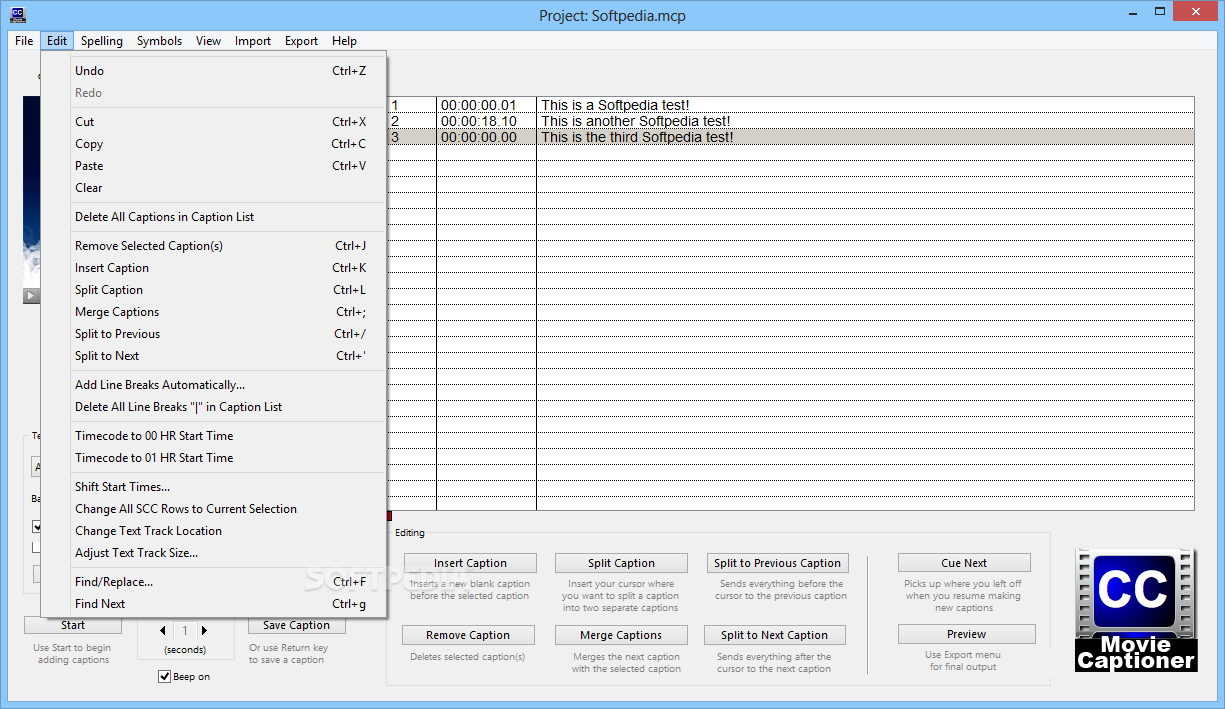

These files are easily accessible from the MovieCaptioner File menu. They will, however, be copied to the Backup folder under today’s date. All temp files will be deleted after you close your project. A MovieCaptioner/Temp folder will be created in your ~user/Library/Applications Support folder for this purpose. You may also revert to the version that you originally opened during that session.

You can find it by going to the Finder’s Go menu, selecting Go To Folder, and typing in “~/Library/QuickTime”. If you are using OS X 10.7 (Lion), Apple has hidden the Library folder. It needs to be put in your Library/QuickTime folder. Make sure you have the ponent plug-in for exporting SCC closed caption files.
Free moviecaptioner alternative movie#
If you’re just exporting a caption file, the small version of the movie will work better for setting captions. You can use a low resolution movie (like 320x240) just to create the captions, then swap out a higher resolution version using File > Load Movie if you need to embed the captions into the video. It is also best to not use large HD movies with a frame rate of higher than 30 frames per second as they can bog down MovieCaptioner and cause it to stutter at some point.This should make it import into MovieCaptioner correctly. For example, if you have Chinese text in a Word document, save it as a plain text document and use the UTF-8 Encoding option. Make sure you save any files you import as plain text (no docs or rtfs) and that they are saved using the UTF-8 Encoding option. In most cases, using UTF-8 is the best choice. Having the wrong Import Encoding setting in the Preferences window could cause MovieCaptioner to crash on import of a caption file.In that case change the first caption to start at 00:00:02.00. The only exception to this would be if you are exporting SCC files for use with Adobe Encore. It is always best to start captions (even if they are blank) at 00:00:00.00.Finished movies will of course work in the QuickTime X Player, but it just will not work for the caption creation process.
Free moviecaptioner alternative install#
You must install QuickTime 7, which is available on the Snow Leopard or Lion install disk (or from the Apple Web site) to get all the features of QuickTime Pro that are necessary for MovieCaptioner to work properly.This is especially important for the spell check to work properly. MovieCaptioner will check to see if it is installed properly when it is first opened. MovieCaptioner should be kept in its own folder and that folder should be installed in the main hard drive’s Applications folder.This will ensure that it can find the movie’s directory easily to write the files it needs for some exports. MovieCaptioner works best if both the project file and the movie you are using are both stored on your computer’s main hard drive instead of an external hard drive or mounted volume.Movies using AVC Coding may even cause MovieCaptioner to crash. Best to re-export the movie from MPEG Streamclip (free from ) if you run into this problem, then reload it into your project by going to the File menu and selecting Load Movie.

This is a bug with that codec and has nothing to do with MovieCaptioner. It will often give an error “end of file reached” and the save will fail.


 0 kommentar(er)
0 kommentar(er)
